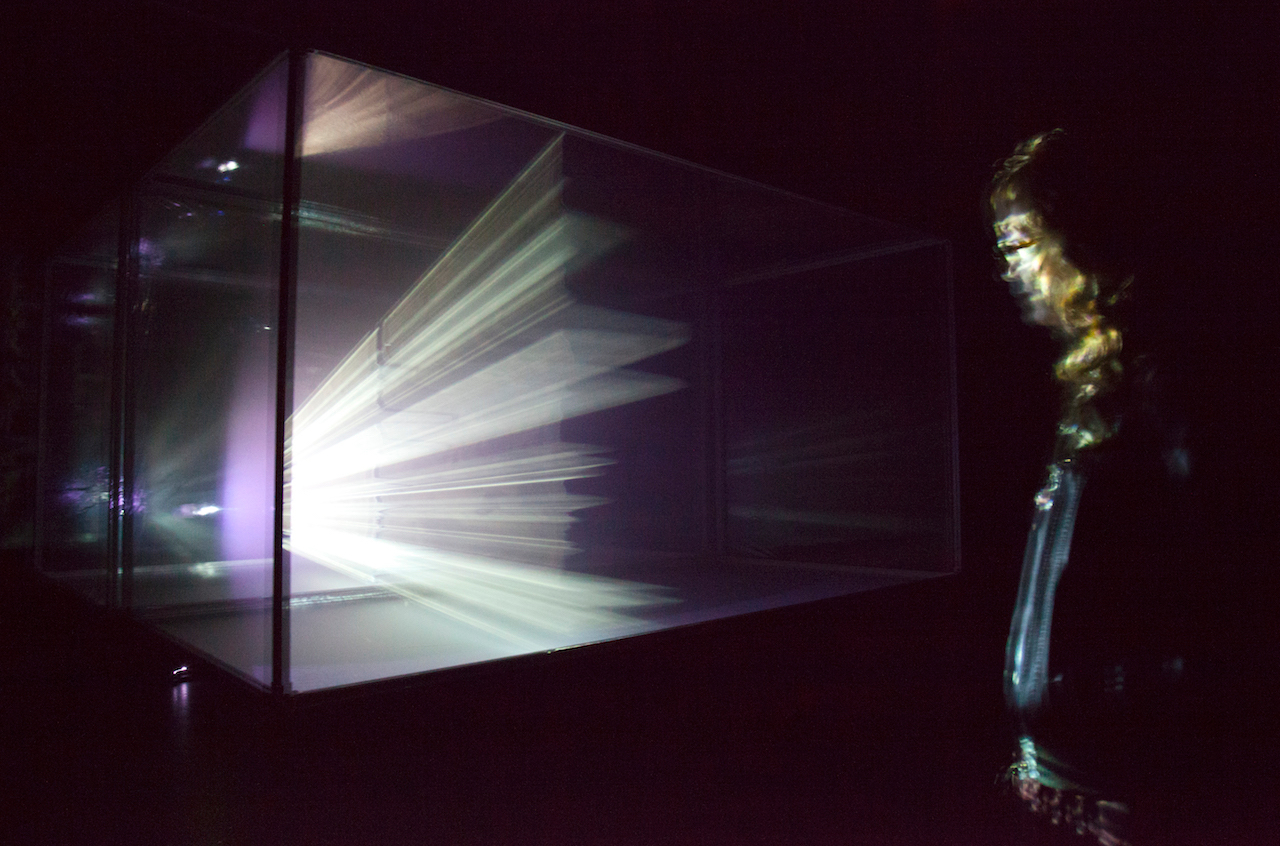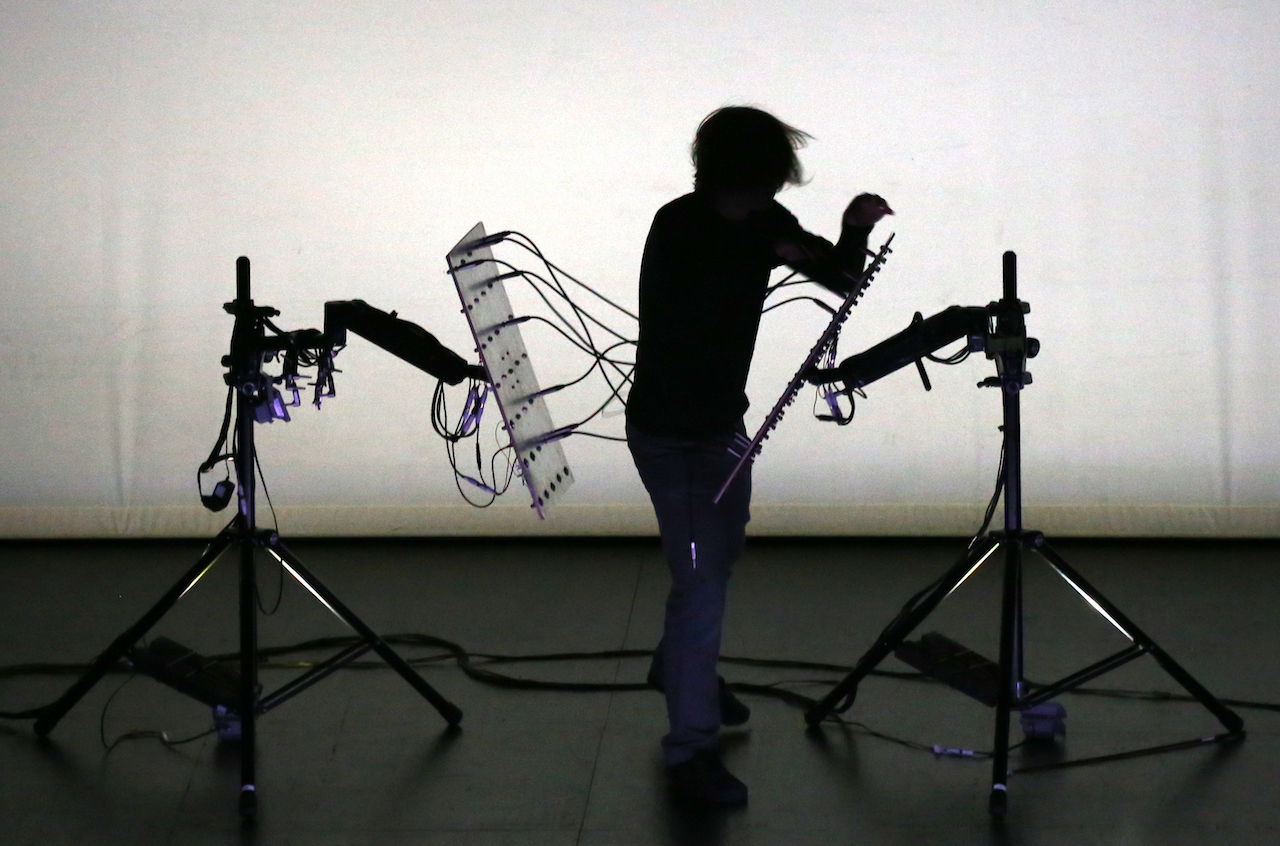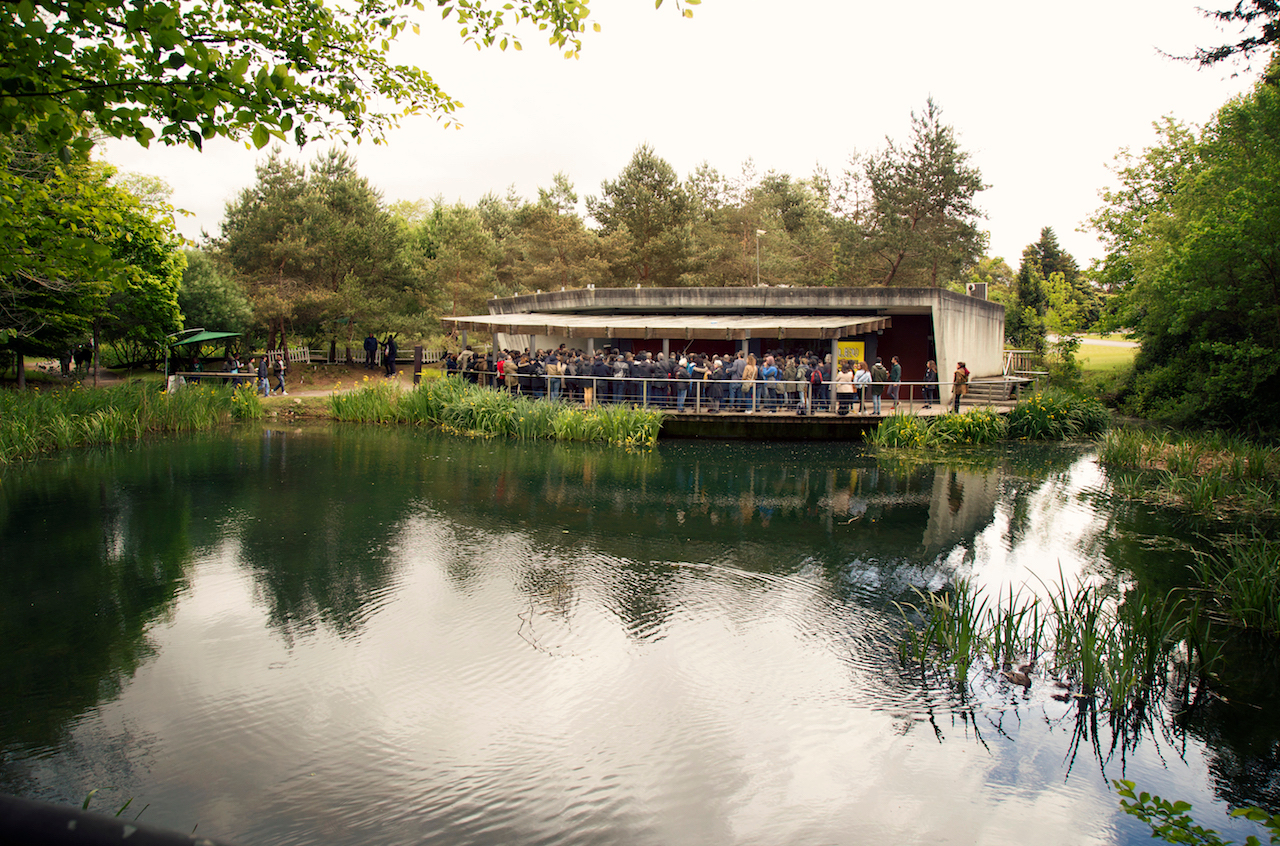Veröffentlicht
May 4, 2017
- Tourists visiting Gijon last weekend might have seen some very odd sights. In the arched entrance of the Laboral Cuidad De La Cultura, a grand university-style building on the edge of town, 20-somethings stroked a light- and noise-emitting black cube. In another arts centre, the Centro De Cultura Antiguo Instituto, visitors took photos of a blue tissue of light floating behind a transparent pane. Inside the San Lorenzo chapel, three embryo-like structures glowed softly above the altar. These installations had come to town thanks to L.E.V. Festival, a four-day event in which "electronic music and the visual arts work in synergy... as a unitary form of art expression." In theory, that idea seems well-established—it's not unusual to see DJs and live acts perform in front of a screen or light display. But most music festivals, by definition, treat visuals as a secondary concern. As L.E.V.'s premise goes, one enhances the other when you do both properly.
On Thursday afternoon, near Calle De Óscar Olavarría, where crowds had spilled out of dive bars to drink cider in the sun, I went to see Olivier Ratsi's Onion Skin. Though Ratsi's work—a wide screen shaped like an open leaflet—had been installed on the stone floor of an 18th century chapel, the room was essentially a void. Watching Onion Skin's red and white frames in complete darkness was a dislocating experience. It was musically compelling, too—theremin tones, bass synths and delays were gradually compressed into a techno-like composition. It was possible to both hear and see the music come together. When the rectangular frames clipped the edges of Ratsi's screen, synth notes struck. As the patterns grew more complex, the music evolved with the same urgency.
Onion Skin and two installations I mentioned earlier—Martin Messier's Boîte Noir, at the CCAI, and Carlos Coronas's Lampyridae, in the chapel—encouraged visitors to explore Gijon, a former industrial hub noted now for its food and drink. ("We have 130 types of cheese in Asturias," one shopkeeper explained.) Most of the festival, though, took place in the Laboral complex, which included a theatre, a cinema, a hangar-sized exhibition hall and a room with frescos and high ceilings. Of the shows that took place in the theatre, Amnesia Scanner and Bill Kouligas's Lexachast looked like the biggest draw. Its ruptured drones and photographic fractals—mostly of teenagers and various landscapes—suggested suburban dystopia. Another AV show, Novi_sad and Ryoichi Kurokawa's Sirens, inspired by the collapse of the market economy, told a more engaging story about decay and corruption.
My favourite show at the theatre was Martin Messier's FIELD. The Canadian artist's onstage setup was not much to look at. Two panels were attached to stands with swivel brackets. A third unit lay on the floor. Several cables of various lengths rested on a hanger. "Reinventing the function of objects" is one of Messier's main interests. During FIELD, he used cables and panels as musical instruments. If Messier's central conceit—plugging in stuff as performance art—seems absurd, then so too, the show suggested, are the mannerisms of showmanship we take for granted. Each time Messier inserted a cable into a port—the sound it produced was similar to a slamming door—he cocked his head back as though he'd nailed the last note of a guitar solo.
L.E.V. is an acronym—in English, visual electronic laboratory—that nicely sums up the festival's purpose. L.E.V. isn't a party destination, but there were plenty of solid dance floor moments over the weekend. I enjoyed live sets from Samuel Kerridge and Factory Floor, acts whose techno dovetailed neatly with the festival's more experimental music. Logos's AV set, a collaboration with the visual artist Oscar Sol in which MC chat and breakbeats surfaced in smoky ambience, was excellent as well.
On Sunday afternoon, I went to see the cellist Julia Kent, who was playing in the city's botanical garden. Once I followed the signs for the gig, I saw a crowd in the clearing, squeezed under the slatted wood and glass roof of a squat concrete building. Others took in the show under hornbeam and oak trees on the other side of a pond. The weather was overcast. "Feel free to dance if you're freezing to death," said Kent, who was playing a black cello and pressing pedals with her bare feet. Kent's versatile playing—she tapped the strings with her bow on one song—was consistently solemn and soothing. For the first time at L.E.V., I shut my eyes. "To be honest," she said, "I was totally unprepared for this. I was thinking, 'Spain, warm.'" She played on. The rain began to pour.
Photo credit /
Piru De La Puente

 L.E.V. is an acronym—in English, visual electronic laboratory—that nicely sums up the festival's purpose. L.E.V. isn't a party destination, but there were plenty of solid dance floor moments over the weekend. I enjoyed live sets from Samuel Kerridge and Factory Floor, acts whose techno dovetailed neatly with the festival's more experimental music. Logos's AV set, a collaboration with the visual artist Oscar Sol in which MC chat and breakbeats surfaced in smoky ambience, was excellent as well. On Sunday afternoon, I went to see the cellist Julia Kent, who was playing in the city's botanical garden. Once I followed the signs for the gig, I saw a crowd in the clearing, squeezed under the slatted wood and glass roof of a squat concrete building. Others took in the show under hornbeam and oak trees on the other side of a pond. The weather was overcast. "Feel free to dance if you're freezing to death," said Kent, who was playing a black cello and pressing pedals with her bare feet. Kent's versatile playing—she tapped the strings with her bow on one song—was consistently solemn and soothing. For the first time at L.E.V., I shut my eyes. "To be honest," she said, "I was totally unprepared for this. I was thinking, 'Spain, warm.'" She played on. The rain began to pour.
L.E.V. is an acronym—in English, visual electronic laboratory—that nicely sums up the festival's purpose. L.E.V. isn't a party destination, but there were plenty of solid dance floor moments over the weekend. I enjoyed live sets from Samuel Kerridge and Factory Floor, acts whose techno dovetailed neatly with the festival's more experimental music. Logos's AV set, a collaboration with the visual artist Oscar Sol in which MC chat and breakbeats surfaced in smoky ambience, was excellent as well. On Sunday afternoon, I went to see the cellist Julia Kent, who was playing in the city's botanical garden. Once I followed the signs for the gig, I saw a crowd in the clearing, squeezed under the slatted wood and glass roof of a squat concrete building. Others took in the show under hornbeam and oak trees on the other side of a pond. The weather was overcast. "Feel free to dance if you're freezing to death," said Kent, who was playing a black cello and pressing pedals with her bare feet. Kent's versatile playing—she tapped the strings with her bow on one song—was consistently solemn and soothing. For the first time at L.E.V., I shut my eyes. "To be honest," she said, "I was totally unprepared for this. I was thinking, 'Spain, warm.'" She played on. The rain began to pour. Photo credit / Piru De La Puente
Photo credit / Piru De La Puente